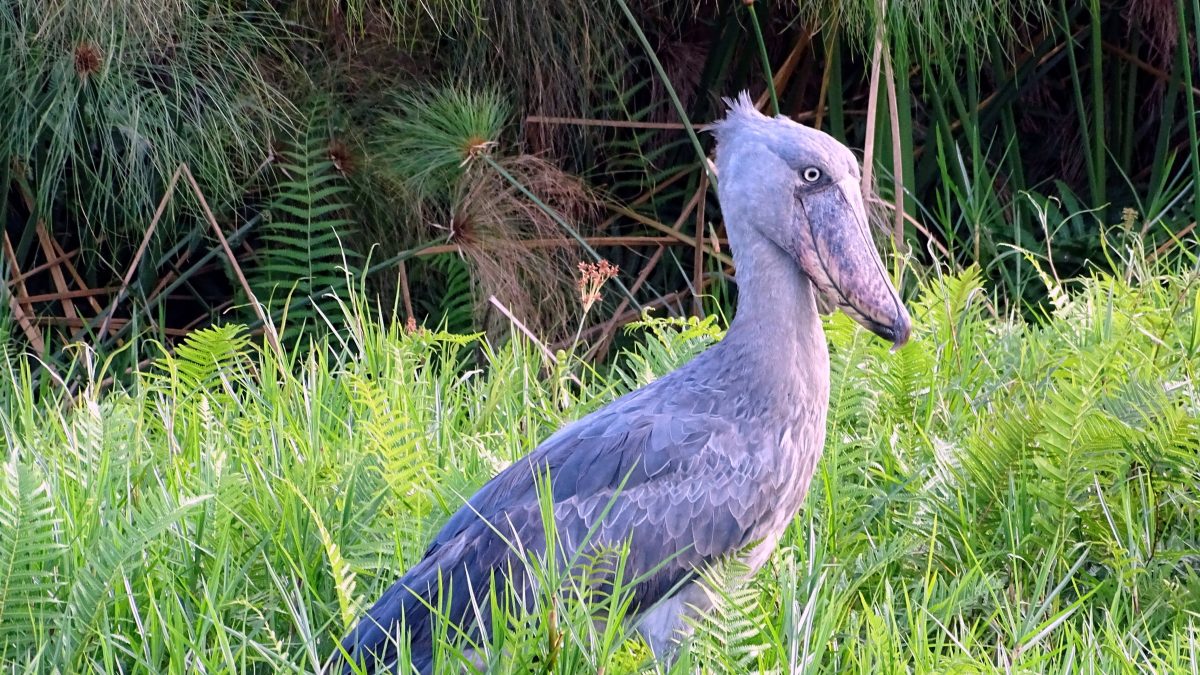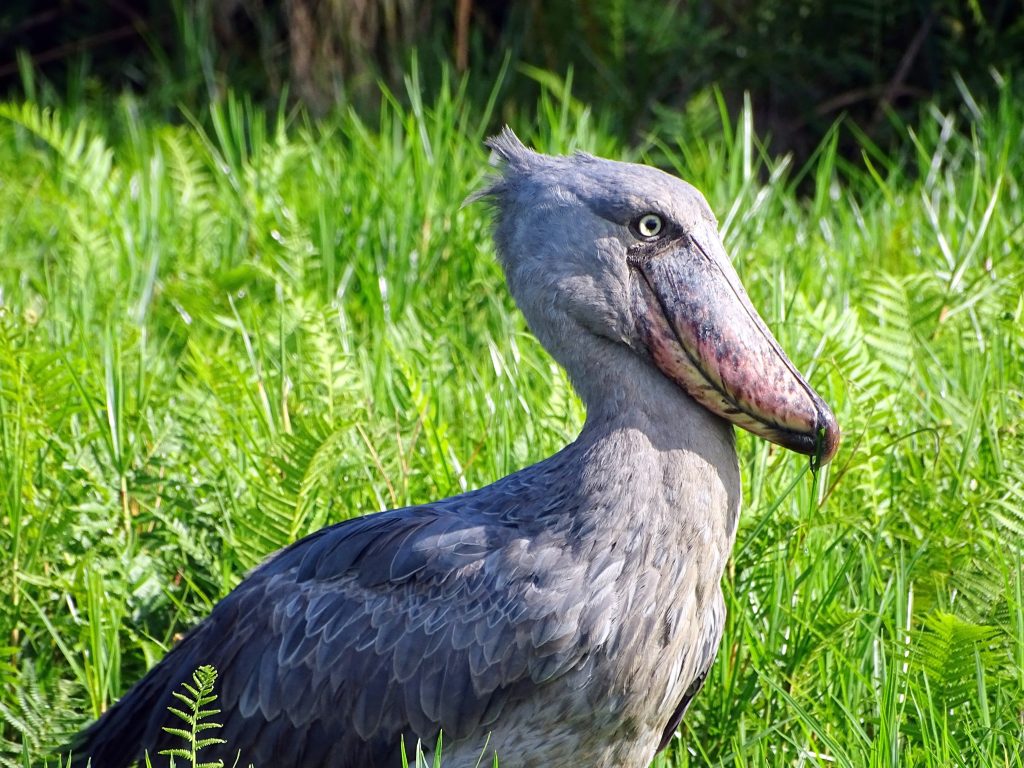
The shoebill stork is an impressive and an ugly dinosaur alike bird that is found in Uganda. It is mostly in Mabamba Swamp, Makanaga and other conservation area. Here you’ll learn 10 shoebill stork facts, including diet, population, sibling behavior, sounds, lifespan, foot size and more.
Below are the interesting facts about the shoebill stork
- Brave
This bird species does not fear danger and fights its enemies head on. If a strong animal makes the stork unhappy for whatever reason, including being in their line-of-sight, the stork has no problem attacking the creature. Storks fight baby Nile crocodiles, other species of storks, and even each other. They even though sometimes they lose the fight, they do not give up.
- Young ones attack each other
Especially if more than one stork is born in the same nest, these ones fight for their mother’s attention. These species prefer staying alone.
- Do not make much noise
They never make noise when hunting prey. They stay silent while waiting to attack their pray. During mating, it releases a loud cry attracting its partner.
- Patient
Shoebill stork mastered patience. The stand in water, large patches of grass, and other hiding for hours waiting patiently for its prey. Shoebills eat at night and sit perfectly still, blending in with the darkness around it.

- Life span of 35 Years
These birds live to see seven generations, they live up to 35 years.
- Shoe shaped beak
The end of the beak curves down and forms a hook. This sharp curve is used to pierce through the bodies of their prey to assist in digestion. They eat small animals like fish, snakes, young crocodiles, monitor lizards among others and the beak can be around 24 centimeters long and 20 centimeters wide.
- 18 meters long feet
The shoebill stork has large feet and its foot can be up to 18 centimeters long.
- 1.5 Meters Tall
The average shoebill can grow up to 1.5 meters tall.
- Use Their Wings to Fly and Keep Balance
They use their wings to intimidate their enemies like predators and keep balance. For instance, when they extend their wings, they are five times larger than their bodies. The wingspan of a Shoebill stretches 2.5 meters. Shoebill stork wings flap at a rate of 150 flaps per minute. That is the slowest flap rate of any bird, but it works.
- Live in Wetlands in Uganda, Sudan, Rwanda and Zambia.
The shoebill can be found living in dense wetlands and swamps of southeastern Africa. These countries include; Sudan, Rwanda, Uganda, and Zambia all have wetlands where shoebills are present and active. Wetlands rarely have trees but the grass is tall and forms hiding places for species such as the shoebill.
Shoebill can be found in these places in Uganda; Mabamba swamp, Makanaga swamp, Murchison falls National Park, Lake Mburo National Park, Toro- Semliki Game Reserve, Lwera swamp, Ishasha sector, Lugogo swamp and Uganda Wildlife Education Center.
The shoebill population is marked as the endangered by International Union for Conservation of Nature (IUCN). with the remaining species to be estimated to be less than 10,000. Fisher men kill believing they are a bad omen thus reducing in their numbers.
They are also other factors affecting the population and these include; pollution increase, epidemic diseases, power construction, climatic changes and political factors like wars.
Gestation Period of a shoebill
They lay about two to three eggs. The parents take care of two eggs. Thus watering them even in the dry season to maintain their temperature until they hatch into chicks within 30 days. After hatching the chicks stay with their parents for 125 days and then left to live on their own.
This bird is a must visit during your safari in Uganda.



